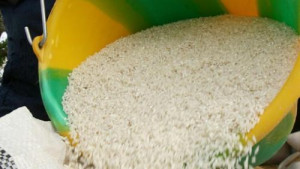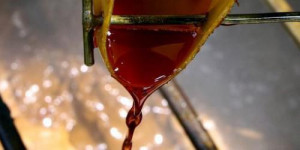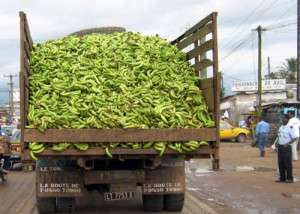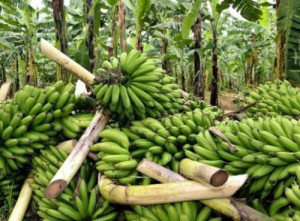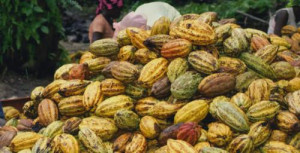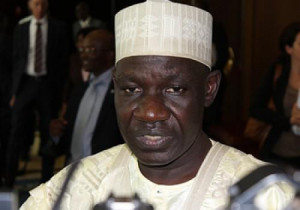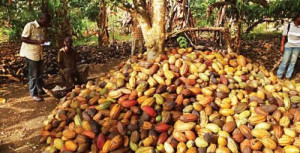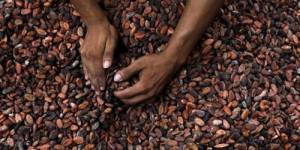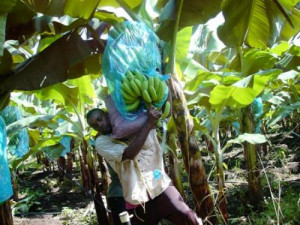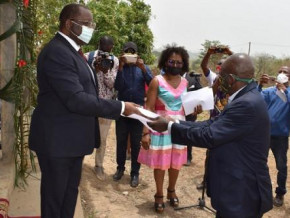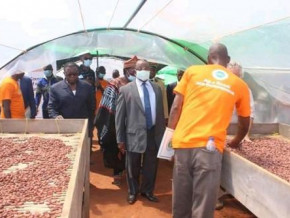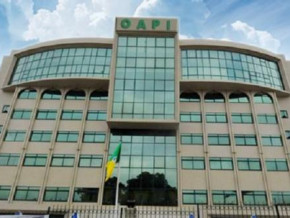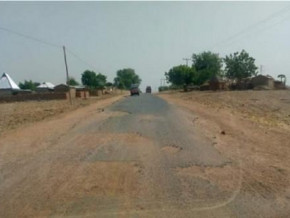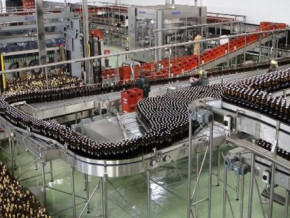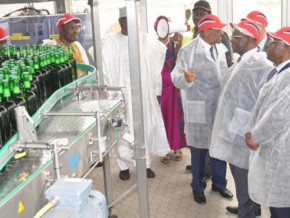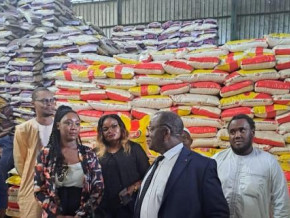
Cameroon: Rice import spending grew by 27.9% to CFA183.7bn in 2017
Last year, Cameroon invested CFA183.7 billion to import 728,443 tons of rice, the National Statistics Institute (INS) said. This reflects an increase by 27.9% in value and 18.6% in volume, compared to 2016, despite the application of customs duties since January 2016.
“Over the past years, Cameroonian importers have been sourcing mainly from Thailand as prices per kg were more competitive compared to other Asian countries,” INS indicated adding that until then, prices had been almost stable at around $500 per ton. However, the unit import price increased recently by 7.9% to CFA252.2 per kilogram. Asia is Cameroon’s main rice supplier (99.8%) and key providers include Thailand (85%), India (7%) and Myanmar (2%).
Back in 2000, the country imported 552,472 tons of rice for CFA156.6 billion. During the peak year 2013, rice import stood at 819,841 tons for CFA212.6 billion, according to INS.
In Cameroon, paddy rice production increased by 12% to 311,674 tons in 2016, upon the continued extension of rainfed rice cultivation and the distribution of chemical fertilizers. However, much of the local production is exported.
Sylvain Andzongo
Gabon seeks to export crude palm oil to Cameroon
Gabonese palm oil producers have offered to export their products to Cameroon to supply refineries, we learnt from sources at the trade ministry.
Back on October 27, 2016, the palm oil refinery in Awala (Gabon) made first exports to Cameroon. Since then, Cameroonian refiners several times purchased palm oil in Gabon, from where transport costs are cheaper than from Indonesia which is also a supplier.
After having long peaked at 100,000 tons per annum, Cameroon's annual structural deficit in crude palm oil grew to 130,000 tons, due to higher investment by refiners while local production is stagnating.
Let’s mention that the strategy to increase Gabonese palm oil exports is part of President Ali Bongo’s plan to diversify their economy and make it less dependent on oil production.
BRM
Cameroon: Banana exports grew to 28,434 tons driven by PHP, in Aug-Jul 2018
Between August and July this year, Cameroon’s banana exports rose to 28,434 thanks to higher volume exported by Plantations du Haut-Penja (PHP), local subsidiary of Compagnie fruitière de Marseille.
According to figures from the country’s banana association (Assobacam) the company exported 4,000 tons more in August, up from the 8,672 tons a month earlier, accounting for nearly 75% of export volume during the period.
Meanwhile, Cameroon Development Corporation (CDC), the market's second-leading company, exported only 5,534 tons, including 4,046 tons exported in July. The reason of this poor performance is the current unrest in the South-West region where the company owns all its plantations. The market’s minor player Boh Plantations exported 1,967 tons of bananas (1,164 tons in August and 803 tons in July).
Brice R. Mbodiam
Cameroon: CDC exported lowest banana volume in 13 years, in August 2018
In August this year, Cameroon Development Corporation (CDC) exported only 1,488 tons of banana, its worst export performance in one month since 2005, according to the Cameroon Banana Association (Assobacam). The volume is also just over six times less than the volume exported in August last year (8,560).
During the period under review, CDC slightly exceeded the volume exported by Boh Plantations (Bpl) which stood at 1,164 tons. Meanwhile, the banana market leader Haut Penja Plantation Company (PHP) exported 12,261 tons.
Sources said the poor performance by CDC is due to Anglophone separatists’ violent protests which have been ongoing for more than a year in the South-West region of Cameroon, where CDC owns all its plantations. The situation led the company to suspend operations, leaving employees jobless.
Let’s note that CDC also operates rubber plantations. It is the country’s second largest employer after the civil service.
Brice R. Mbodiam
Cameroon : Cocoa exporters move from South-west region, fearing insecurity
Cocoa traders and exporters initiated measures to relocate their employees, amid separatists’ violent demands in Cameroon’s south-west region. According to Channel NewsAsia which relayed Reuters, major exporters who operate in the region decided to either move their staff to the region’s quieter localities or simply move them from the region.
The move is to flee violence between Anglophone separatists and security forces which already affected the previous season which ended mid-July. Olam and Telcar Cocoa, the local trader of U.S. Cargill, also adopted this strategy. Both companies accounted for 47.7% of volumes exported during the 2017-18 campaign, with 27% for Telcar Cocoa, and 20.7% for Olam. The latter has already completely moved its staff from the South-west region (localities of Mamfé and Kumba), to Douala, the economic capital. The Dutch firm Theobroma also moved their staff from Mamfé to near Kumba from where the beans are channeled to neighboring Nigeria.
Due to these relocation plans, the 2018-2019 cocoa season is forecasted to be a little gloomier in the South-West region, which alone accounted for 47% of national output in 2016-17, according to the National Cocoa and Coffee Board (ONCC). However, the region’s output dropped by 32% in 2017-18 when the separatist violence began, causing farmers to abandon plantations.
Let’s note that exporters and traders had to pay separatists to avoid destruction of their facilities or kidnapping of their employees.
Brice R. Mbodiam
Cameroon: IDB grants CFA34.6bn to boost agriculture
The Islamic Development Bank (IDB) approved $53.71 million (CFA34.6 billion) in financing to Cameroon, under three agreements, to boost the agricultural sector. Documents were signed August 15 between the Cameroonian minister of economy, Alamine Ousmane Mey (photo), and IDB’s Vice President, Sayed Aqa.
The financing targets agricultural infrastructures and value chain development projects in the country’s South-West. This project aligns with the government’s agricultural plan featured in the 2010-20 Growth and Employment Strategy paper (GESP). The goal is indeed to contribute to the sector’s inclusive development through higher productivity. Under the move, smallholders will see an improvement in incomes and agricultural services.
Moreover, the IDB fund will be used to facilitate access to basic public social services (water, sanitation, education and health), promote the creation of rural businesses and institutions operating in crops’ value chain and improve cooperatives’ capacities through rural development projects.
S.A
Cameroon seeks a $3M Chinese humanitarian fund to address crisis in Anglophone regions
Upon the impending China-Africa Cooperation Forum (Focac) to be held in September, the Cameroonian President Paul Biya is seeking CFA1.7 billion ($3 million) from China to address the current unrest in Anglophone regions.
“President Xi Jinping should announce China's support to the emergency humanitarian assistance plan decided by the (Cameroonian) Head of State for people in the North-west and South-West regions who are victims of exactions from terrorists who turned into secessionists,” official sources said.
According to the Presidency of the Republic, the support could be granted as a gift without consideration, including aid equipment. Let’s mention that the fund is part of the 2018-19 Humanitarian Assistance Plan valued at CFA12.7 billion announced June 20 by the Prime Minister Philemon Yang.
The scheme is set to reach the estimated 74,994 Internally Displaced Persons (IDPs), of which 66,262 are in the South-West region and 8,732 in the North-West region. The victims of abuses in host localities and communities are also included, as well as the 21,291 refugees estimated by the Office of the United Nations High Commissioner for Refugees (UNHCR).
Major areas of actions include housing, food and basic necessities, education, protection and reconstitution of individual documents. The government also plans assistance and comfort visits to the refugees in Nigeria.
S.A
Cameroon: Cocoa farm-gate price increased to CFA1,250 during the 2017-18 mid-crop
During the 2017-18 mid-crop which ended mid-July, the cocoa farm-gate price increased from CFA550 to CFA1,250, the national cocoa and coffee board (ONCC) indicated in its 2017-18 report.
This rise in farm-gate price is attributable to lower prices of commodities (including cocoa) on the international market. The government has therefore cut export taxes by 50% as to allow exporters to buy beans from local producers at higher prices.
Let’s however note that despite all government measures during the 2017-2018 cocoa season, the farm-gate prices remained well below the average price per kilogram applied past seasons.
BRM
Cameroon: Three traders alone accounted for 56% of cocoa exports in 2017-18
In Cameroon, the cocoa trade market is dominated by a few number of traders, the National Cocoa and Coffee Board (ONCC) revealed. Indeed, three operators alone accounted for 56% of the 170,981,084 tons of cocoa exported during the 2017-18 market year which ended mid-July.
Telcar Cocoa provided 27% of exports. Though it witnessed a decline in activities, consecutive to troubles in the South-West region (its flagship production zone), this local trader of U.S. firm Cargill succeeded in keeping its lead position on the local market. Olam and Cameroon's Ndongo Essomba, closed the top 3, accounting for 20.7% and 8% of bean exports, respectively, in the 2017-2018 season.
Let’s recall that during the period, the overall volume of cocoa traded was valued at 253,510,430 tons, over 20,000 tons more than the previous season.
BRM
Cameroon : Agriculture contributed 76.38% to GDP in 2017
The Cameroonian ministry of agriculture (Minader) is pleased to announce that in 2017, the agricultural sector alone provided 76.38% of GDP, up from the 68% a year earlier.
The feat was achieved thanks to efforts pulled to boost production in high value added sub-sectors, through increased mechanization and equipment. Key beneficiary sub-sectors include cocoa, coffee, cotton, rubber, rice, banana, manioc, etc. Cocoa production which grew by 9% in 2016, is expected to surge by 18% this year, while banana output should grow 5%, from 1% in 2016.
Let’s mention that under this move, producers benefited from higher quality seeds and plant material. Also, the establishment of farms across the country helped increase the areas cultivated, increasing production.
S.A
Mags frontpage
- Most read 7 days
- shared 1 month
- read 1 month


